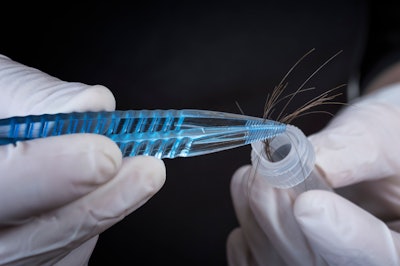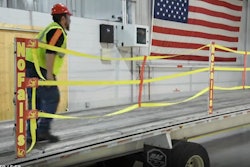
On June 25, 2015, a truck driver with methamphetamines in his system was traveling north on Interstate 75 near Chattanooga, Tennessee. Traffic had slowed because of road construction, but this truck driver never slowed down.
He collided with the rear of a Toyota Prius.
The truck-tractor continued forward and collided with seven additional vehicles, forcing them into subsequent collisions. Of the 18 vehicle occupants, six people died and four people were injured. A post-crash fire consumed one vehicle.
This tragedy didn’t need to happen. The National Traffic Safety Board (NTSB) investigated the accident. NTSB reviewed the truck driver’s toxicology results from drug tests taken after the crash. The driver had a history of drug abuse.
NTSB found that “the [hair] test results indicated a pattern of drug use not identified by the U.S. Department of Transportation (DOT) drug testing program.”
[Related: Confused about ‘mandatory’ hair testing regs for driver drug tests? Here’s what to know]
The truck driver had previously passed a pre-employment urine test, the only method DOT requires. But studies have found a urine test can miss nine out of 10 actual drug users.
Had this truck driver’s employer required a hair test, it’s likely the driver would have tested positive for drugs and been disqualified from operating a truck.
In its findings, NTSB suggested that DOT implement more stringent drug test protocols for truck drivers, such as hair testing. The agency requested that DOT’s Federal Motor Carrier Safety Administration (FMCSA) “gather data on the prevalence of commercial motor vehicle driver use of impairing substances and to consider alternative drug testing methods.”
Six years and no action
Congress went further. As part of the FAST Act of 2015, Congress authorized DOT to recognize hair testing, in lieu of a urine test, for pre-employment and random testing of commercial truck drivers. The Department of Health and Human Services (HHS) was given one year to deliver testing guidelines to DOT, so that motor carriers could quickly utilize hair testing rather than the less effective urine test in their truck driver hiring protocols.
HHS had an easy task. An ISO/IEC 17025 accreditation for drug testing laboratories is internationally recognized and available. Additionally, drug testing labs can earn accreditation specifically for hair testing from the College of American Pathologists. HHS could have completed a few “cut and paste” exercises and delivered the guidelines to DOT.
But six years later and nothing has happened. HHS has not completed the guidelines. Further, neither DOT nor FMCSA have acted. Despite the authority Congress gave DOT, FMCSA will not today disqualify a truck driver for failing a hair test for drug use.
Should DOT recognize hair testing now?
According to research in the current issue of The Journal of Transportation Management, about 275,000 U.S. truck drivers would test positive for illegal drugs if a hair test was submitted. That’s the equivalent of 21,000 commercial airline pilots.
How many passengers would board a commercial flight knowing the pilot may have an undetected drug abuse problem? Yet millions of motorists drive alongside truck drivers operating 80,000-pound tractor trailers each day.
Drug impaired truck drivers are a public safety risk. DOT should act on the authority Congress gave the agency in 2015 and recognize hair testing, in lieu of a urine test, as Congress has authorized.
Employers should submit hair test failures to the Drug and Alcohol Clearinghouse so that drug abusers do not operate commercial trucks on U.S. highways.
Doing nothing, as DOT has done for six years, should no longer be an option.
Lane Kidd is the Managing Director at The Trucking Alliance, a bipartisan coalition of transportation, logistics, insurance and technology companies. The Trucking Alliance's core mission is to eliminate all large truck crash fatalities.











